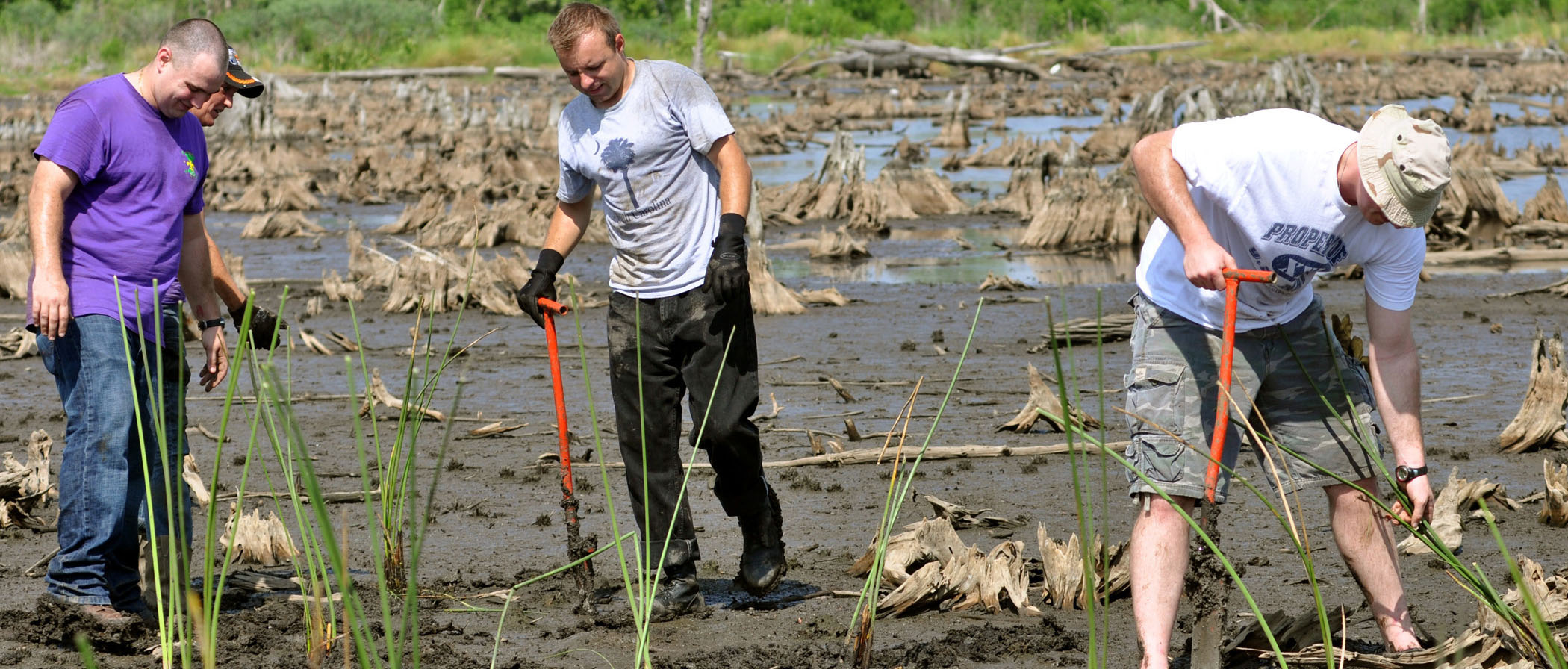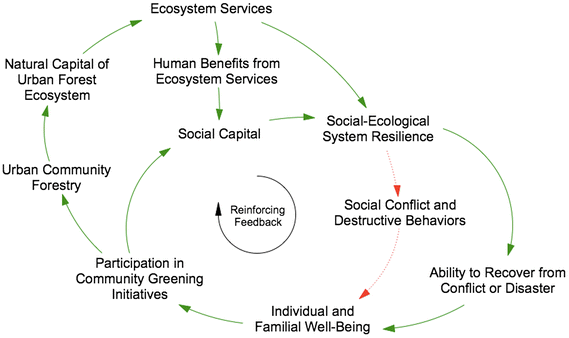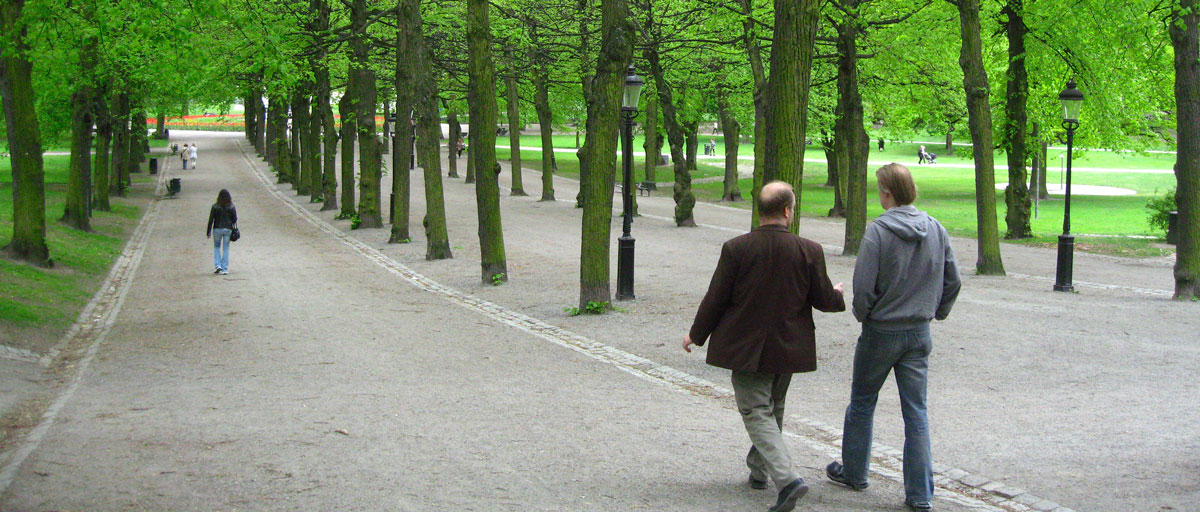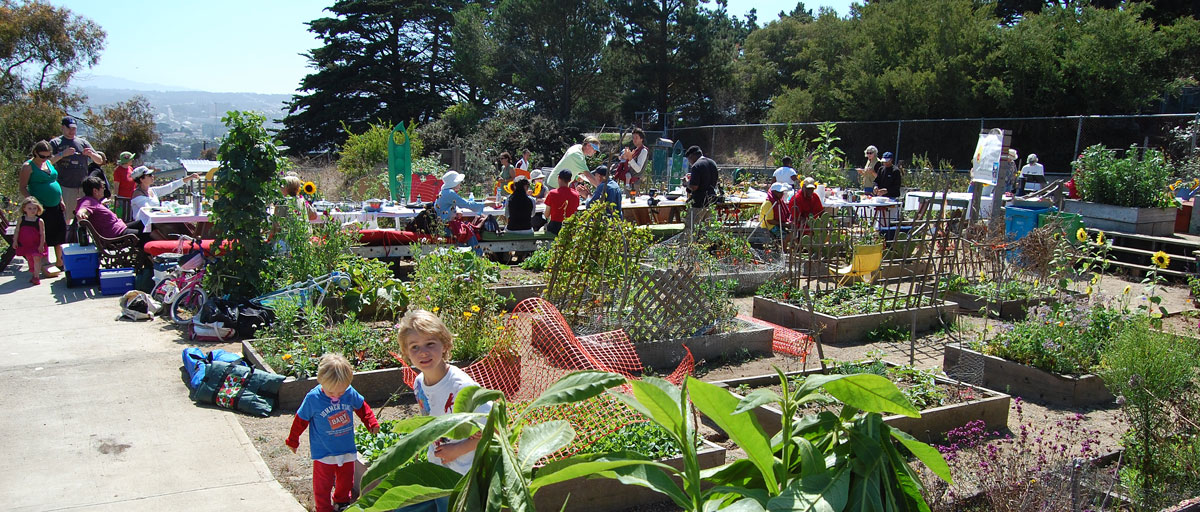
Sailors assigned to Naval Air Station Joint Reserve Base New Orleans and Fleet Logistics Support Squadron 54 volunteered to help replant California Bulrush that was destroyed by Hurricane Katrina in 2005. The potential for civic ecology projects to aid disaster recovery efforts is the inspiration for a new paper in Sustainability Science. Photo: J.P. Curtis/U.S. Navy
Bildtext får vara max två rader text. Hela texten ska högerjusteras om den bara ska innehålla fotobyline! Photo: B. Christensen/Azote
Civic engagement and ecological restoration
After disasters, look for the virtuous cycle
How urban greening and civic ecology projects can improve human well-being and restore crucial ecosystem services
• Trees are powerful symbols of both place and persistence. During the devastation of New Orleans by Hurricane Katrina, 75% of the city’s trees were damaged or killed
• Returning residents used the symbolism of trees in their community to reconnect with the devastated landscape, and initiated several tree-planting projects across the city
• These tree planting projects contained all the elements necessary to create a virtuous cycle, which led to improvements in the social-ecological system of the recovering communitiesa
Hurricane Katrina was a disaster for the residents of New Orleans, Louisiana. Flooding from Katrina affected 80% of the city, killing many and displacing many more. Many doubted that New Orleans could recover from the damage. The loss of human life and human infrastructure was devastating, but the damage to the urban forest of mature trees was equally so.
Thousands of mature individuals of bald cypress, magnolia, and live oak species were killed or damaged by Katrina. For residents, these trees were iconic symbols of New Orleans prior to Katrina and their loss was just another part of the disruption of their lives and sense of place. As a result, several projects involving tree-planting in New Orleans became powerful tools for engaging survivors and creating a community determined to restore green areas around the battered city.
Despite their humble aspirations, the tree planting projects in New Orleans sparked a chain of events that ultimately benefitted local communities and the broader social-ecological system of New Orleans. They were described as a ‘virtuous cycle’ with positive outcomes for both individuals and ecosystems.
This ‘virtuous cycle’ of civic engagement is also the point of departure for a new paper recently written by centre researcher Thomas Elmqvist and colleagues in the journal Sustainability Science. Elmqvist and his colleagues believe a social-ecological system view of disaster recovery allows for the linking of concepts such as natural capital, social capital, ecosystem services, human wellbeing and resilience. It also acknowledges that a community’s sense of place may be linked to green elements of the urban environment.
This sense of place can provide the impetus for social-ecological recovery in the aftermath of disaster
Keith Tidball, lead author
Based on their observations from New Orleans coupled with their own experience from ecological restoration and urban greening projects, Elmqvist and his colleagues identified six components necessary for the creation of virtuous cycles.
A virtuous concept
According to the researchers, the six start with the emergence of civic ecology practice. Disasters create opportunities for new kinds of organisation and activity in communities. If civic ecology projects become part of the reorganised system, then the second element of increased natural capital becomes possible. With increased natural capital, there can be an increase in the production of ecosystem services in the community. These can be services such as shade or aesthetics or recreation. This is the third element.
The fourth element in the creation of a virtuous cycle arises as an increase in social capital following the increased access to beneficial ecosystem services. An increased sense of community and security can enhance social relations. This helps expand civic ecology projects or inspire new forms of engagement. In combination the previous four elements produce the fifth element – an increase in human wellbeing.
"When civic ecology projects improve human wellbeing, they have the potential to become self-reinforcing processes. If this happens, you then have the sixth and final element necessary for a virtuous cycle," says Keith Tidball, lead author of the study and senior extension associate at Cornell University.
To assist in the application of their conceptual framework, the researchers provide a diagnostic tool for detecting the presence of virtuous cycles in civic ecology projects. The tool contains six questions with yes/no answers, which focus on each of the six elements listed above. The tool is intended to help policy makers and social-ecological researchers alike.
Tidball, K. G., Metcalf, S., Bain, M., and Elmqvist, T. 2017. Community-led reforestation: cultivating the potential of virtuous cycles to confer resilience in disaster disrupted social–ecological systems. Sustain Sci. DOI: https://doi.org/10.1007/s11625-017-0506-5
Thomas Elmqvist is a professor in Natural Resource Management at Stockholm Resilience Centre, Stockholm University. His research is focused on ecosystem services, land use change, urbanization, natural disturbances and components of resilience including the role of social institutions.









